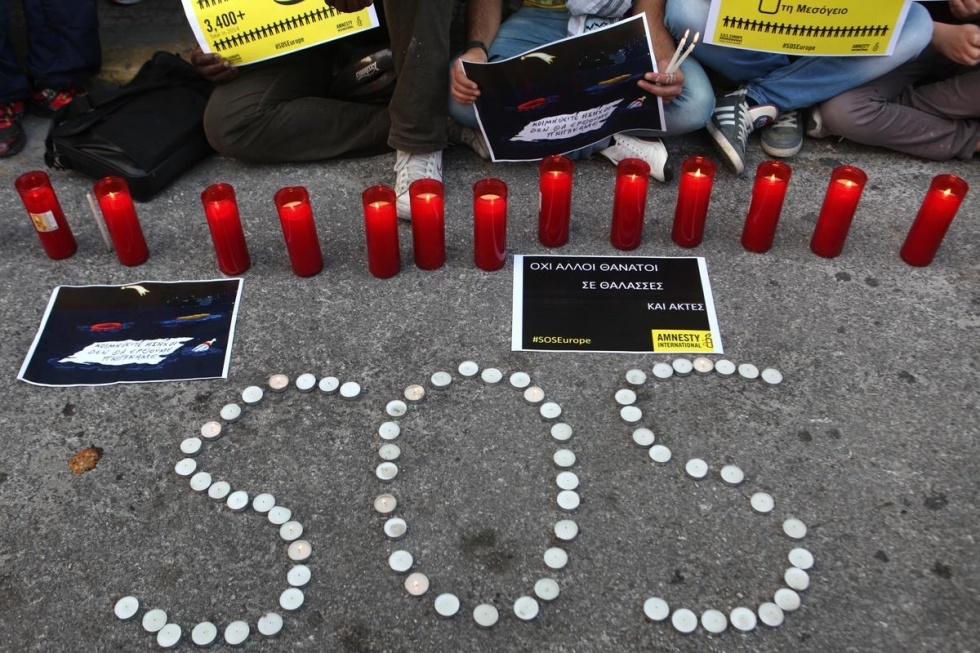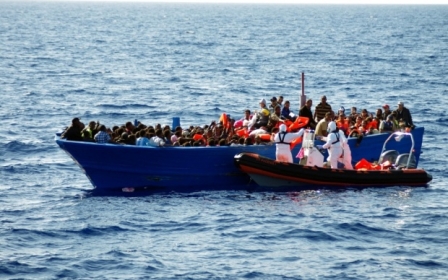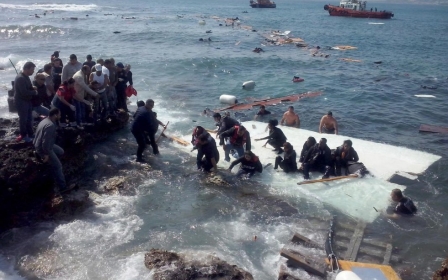Europe discusses migrant crisis: face-saving, not life-saving solutions

European leaders agreed late on Thursday night on joint measures aimed at tackling the ever-rising number of migrant deaths in the Mediterranean, a crisis dubbed a “tragedy” by the European Union (EU).
At the end of a drawn-out crisis summit, the second they had held in a week, EU heads promised to mobilise all efforts at its disposal to prevent further loss of life at sea and to tackle the root causes of the human emergency.
At the summit in Brussels, EU leaders honoured the more than 1,000 dead so far this year with a moment’s silence, with EU President Donald Tusk saying that saving the lives of innocent people was the “number one priority”.
They agreed on Thursday to at least triple the funding for two border control operations run by Frontex, an EU co-ordination agency. Operation Triton is a sea-based mission in the central Mediterranean, while Operation Poseidon patrols Europe’s eastern borders, between Greece, Turkey and Albania.
Meeting the problem half way
However their promises of increased financial support for a Europe-wide sea border patrol mission have already come in for harsh criticism from campaigners, with a spokesperson for Amnesty International decrying the agreement as “a face-saving not a life-saving operation”.
“All the words and resources being thrown at this problem suggest that EU leaders are being serious about saving lives at sea. But the reality is they are still only meeting the problem halfway.”
Criticism also came from within the top levels of the EU, with politicians telling MEE that the devil of the announced plans is in the detail.
Judith Sargentini, a Dutch member of the European Parliament and migration spokesperson for the European Greens, said she was “disappointed” with the outcome of the meeting, which was hailed by EU heads of state as “historic”.
“This is really not an accurate response to the migrant crisis and will not prevent more people from drowning in the Mediterranean,” Sargentini said.
Despite the promised boost to funding for both Triton and Poseidon programmes, Sargentini says the missions will remain within the mandate of Frontex.
Border control not rescue mission
“It is important to note that this mandate is in the first place to protect European borders, not to search for and rescue drowning migrants.”
"If Frontex has more boats at its disposal, it will encounter more refugees at sea of course. That is positive. But the Frontex boats are not there to look for refugees. Their purpose is to stop migrants from coming to Europe. On the contrary, Mare Nostrum, the Italian operation which was stopped last year because European funding ended, did search pro-actively for refugees.”
Mare Nostrum, the Italian-led sea mission launched after 400 migrants drowned off the coast of the Italian island of Lampedusa in 2013, rescued tens of thousands of migrants from a certain death by drowning. During the year-long mission, Italian boats, helicopters and planes went very close to the Libyan coast to search for stricken ships. “That is outside Frontex’ area of operation,” said Sargentini. “So the precise wording of the statement is crucial. Frontex has a mandate to operate only 30 sea miles from the European coast.”
Mare Nostrum cost nine million euros [$9.78mn] per month. By tripling the funding for Triton from three to nine million, the new European operation will match the original Italian programme. But, according to Sargentini, “the really important issue is not just the budget, but also the mandate of Frontex. What are its prerogatives and where will it operate?”
She added that the rest of the plan appeared to be very repressive. “It is about capturing and destroying vessels. It is about the Common Security Defence Policy - in plain speak: European military cooperation. This has nothing to do with a new policy on refugees and migrants. I’m very concerned because there is an urgent need now to have large-scale rescue operations. That should really come first.”
EU's broken migrant policy
The European leaders have yet to formulate a common policy on migration and postponed the discussion of a so-called European Agenda for Migration to June. Sargentini, like other European politicians, has no idea what such a European agenda would entail. “There are internal discussions and there are different opinions. Even if the European Commission would draw up a clear road map to regulate legal access to the EU for migrants and the settlement of refugees, you have to reckon with the reluctance of member states to comply.”
On the boats crossing from Libya there are broadly three categories of immigrants: political refugees; immigrants who are looking for better economic conditions; and – a smaller group - trafficked people. The refugees come mainly from Syria, Sudan, Somalia and Chad. Many of the economic migrants come from West Africa.
Instead of what some see as a piecemeal solution, Green and left politicians are demanding tough action. Firstly, they want 0.05 percent of the total EU budget to be spent on tackling the crisis. “You have to convince both groups not to board one of these vessels to cross the Mediterranean,” explains Sargentini.
“Secondly, we should discuss the need to improve European asylum and migration policy. But there is nothing concrete about that [in the statement]. Nothing is said about internal European solidarity. Nothing is said about the proposed pilot project to accept 5,000 refugees and to resettle them across several European countries. So they didn’t even agree [on accepting] 5,000 refugees; but 5,000 is peanuts considering the magnitude of the problem.”
Racist rhetoric
An increasingly racist rhetoric surrounding the issue has grown in EU countries including Italy, where the bulk of the boat-bound migrants are arriving, as reported in MEE this week. Two tweets in Italy following the sinking of the migrant boat with up to 800 drowned, included: “700 victims … too good to be true!” and “If only all of Africa would sink.” Newspaper columnists in Italy and the UK have responded to the crisis with inflammatory comments, with the UK’s Sun columnist Katie Hopkins describing the migrants as “cockroaches” and calling for gunboats to be sent to sink the boats.
United Nations High Commissioner for Refugees (UNHCR) Laurens Jolles said last week: “It wouldn’t have been possible in the past, the racist rhetoric, the rhetoric of intolerance. In the 60s, 70s and the 80s, we would never have accepted this.”
This leaves migrant organisations, Green and minority politicians to argue for an end to the Fortress Europe policies that have driven migrants to take the more dangerous route via Libya. Sargentini says: “I’m not arguing that you have to allow everybody into Europe. But Europe has to take away the need of would-be immigrants to resort to the dangerous and illegal sea journey. Labour migrants should be offered legal access to the European labour market. The EU does not offer legal access nowadays but millions of foreigners are working illegally in Europe.
Europe needs migrants
“They are doing work that apparently has to be done, at the bottom of the labour market as it is called, for instance in agriculture. Why don’t we legalise, regulate and facilitate this type of labour migration? Europe only facilitates migration for the top of the labour market. The consequence is that people are coming here unorganised and, once here, are often unable to leave.”
The European summit decided to reinforce the cooperation – both military and border patrol - with the countries of origin and transit, especially the countries around Libya. Sargentini questioned what kind of cooperation would be involved.
“In that case you are in fact shifting the European frontier to the South. Before the Arab spring, when the EU was still dealing with so called nice guys like Ben Ali, Mubarak and Gaddafi, we paid those regimes to patrol their own territorial waters to prevent migrants from leaving. We also paid Gaddafi to keep an eye on the border with Niger. I find that quite reprehensible and I’m not in favour to go back to such a situation.”
Middle East Eye propose une couverture et une analyse indépendantes et incomparables du Moyen-Orient, de l’Afrique du Nord et d’autres régions du monde. Pour en savoir plus sur la reprise de ce contenu et les frais qui s’appliquent, veuillez remplir ce formulaire [en anglais]. Pour en savoir plus sur MEE, cliquez ici [en anglais].




